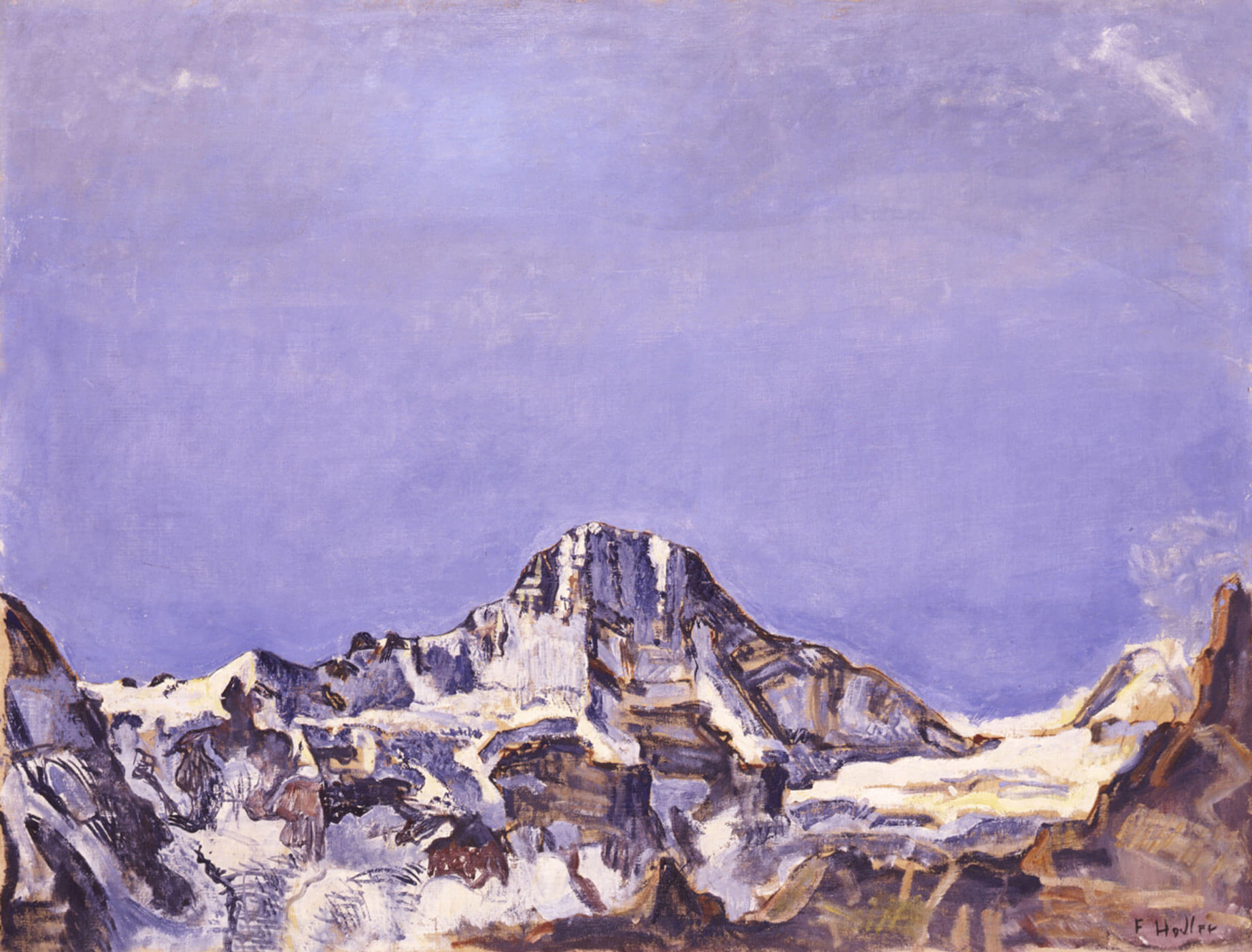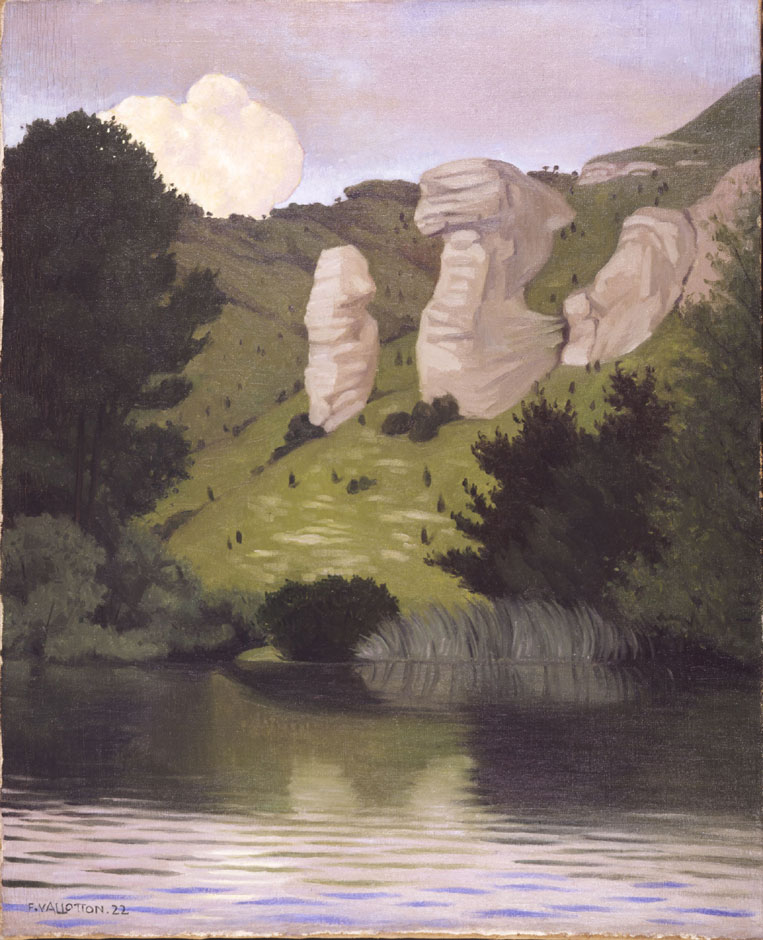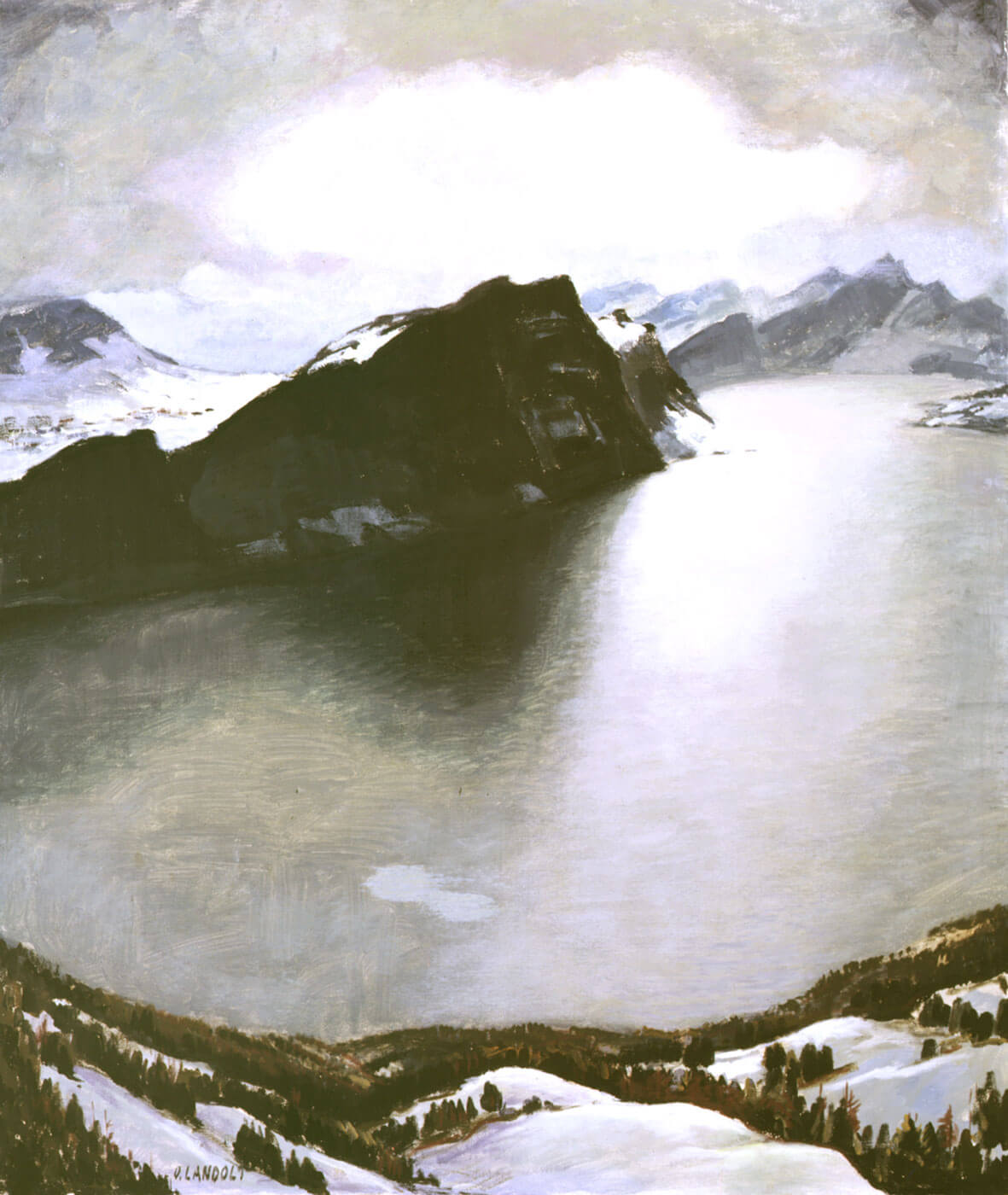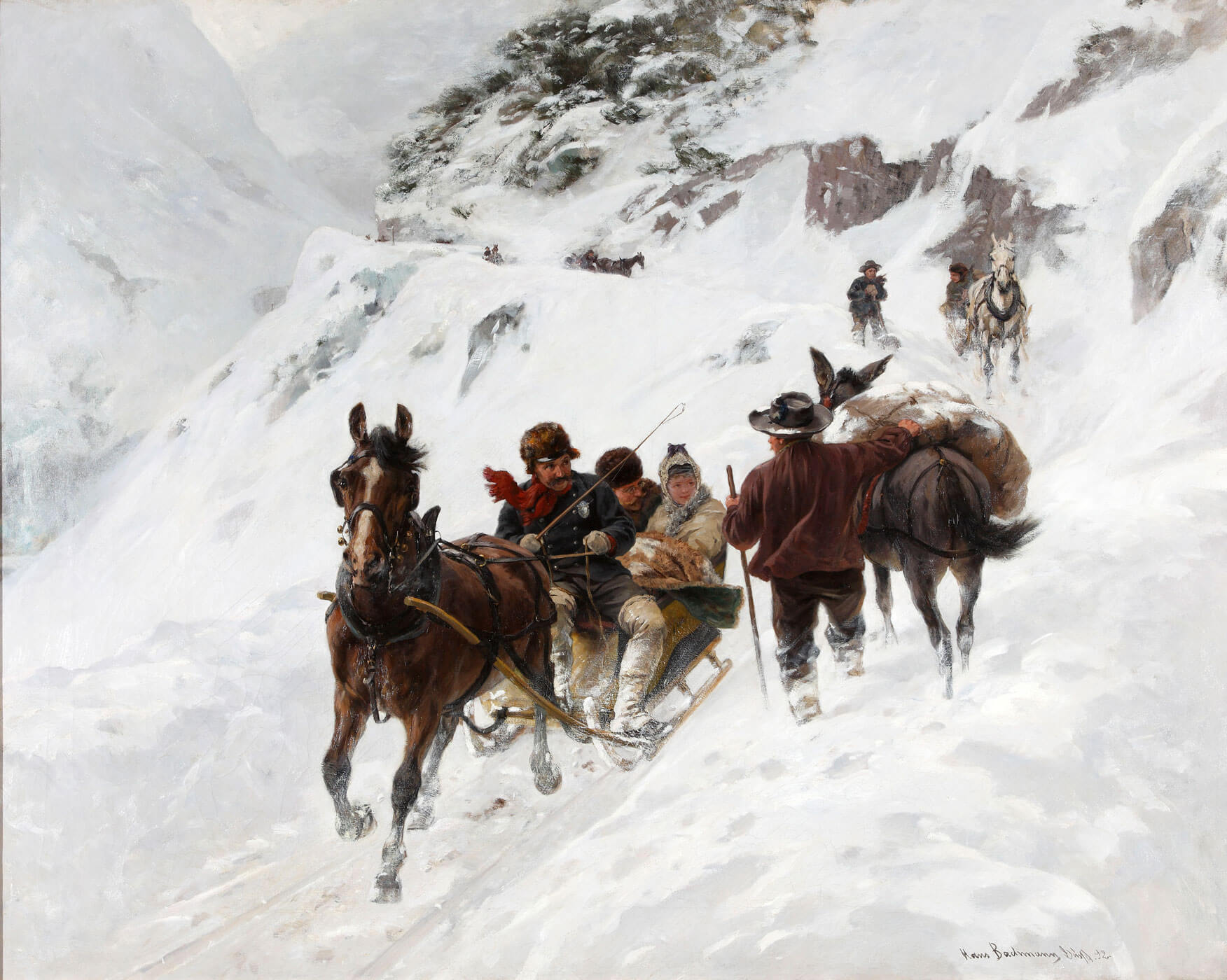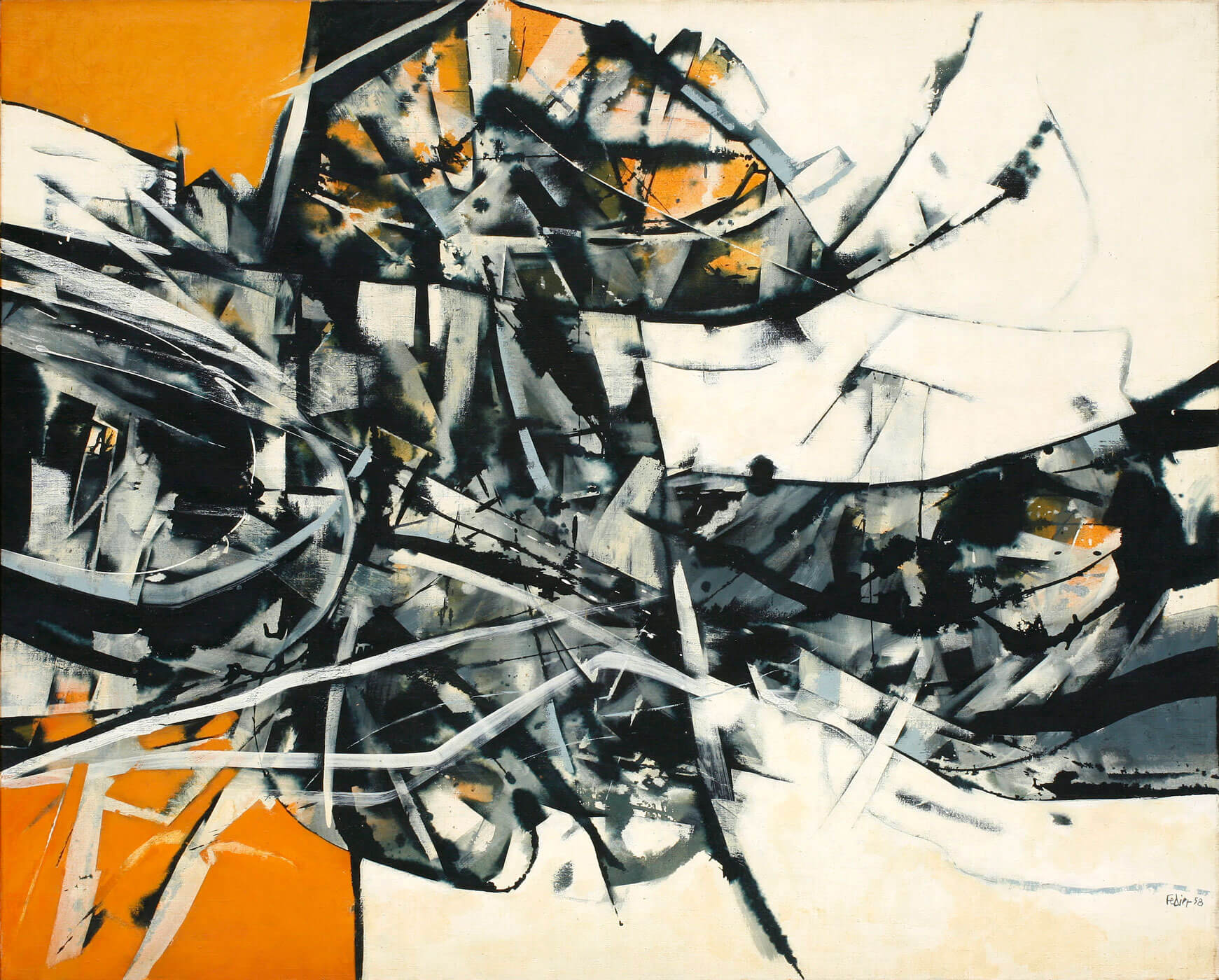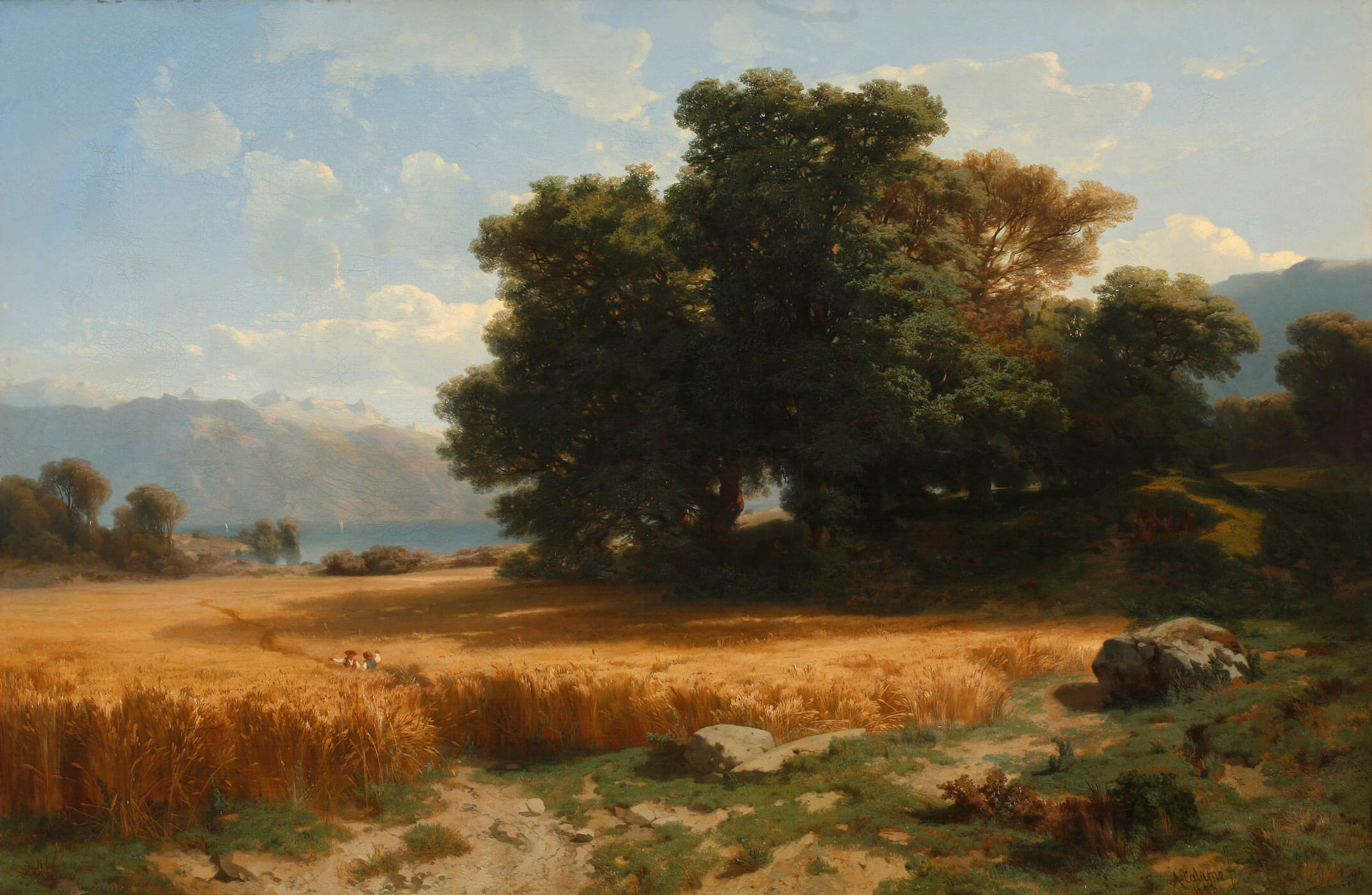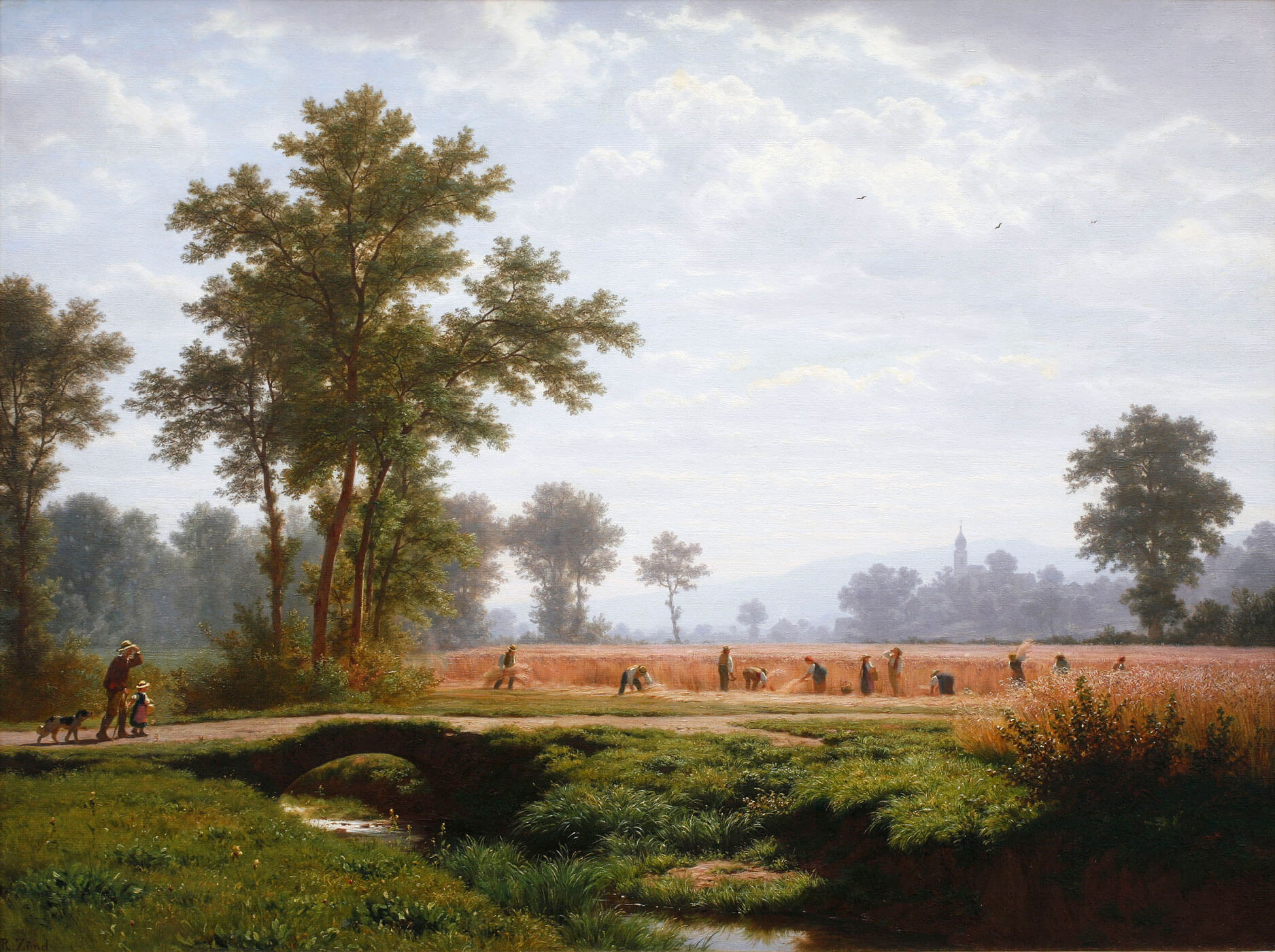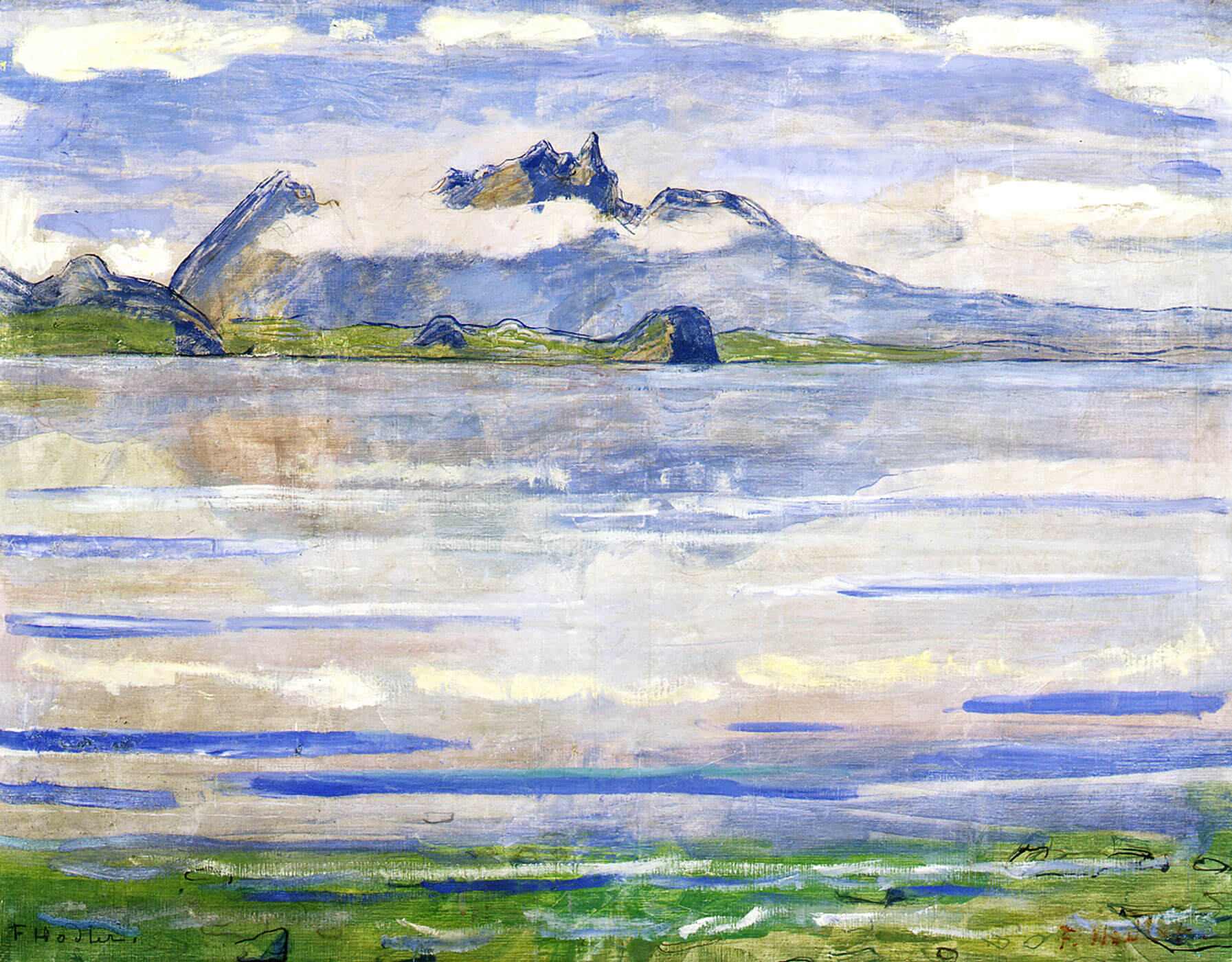Ins Offene!
Landschaftsdarstellungen von Robert Zünd und Ferdinand Hodler bis Max von Moos
Lucerne is spoilt! It hasn’t just got the beautiful lake, it has the whole alpine panorama right on its front door. The perennial influence of this backdrop on art is also reflected in the collection of Kunstmuseum Lucerne. With ‘Ins Offene!’ this year’s presentation of the collection thus brings the landscape into focus.
The exhibition offers a little art historical excursion into the depiction of nature: the walk leads from the idyll, via realistic and symbolist representation to nature as a model for abstraction. The works don’t just provide an insight into the various styles, they also provide information about the relationship of man and the nature surrounding him. Classical representation of landscape shows man as being its ruler while at the same time being in quiet harmony with it. In symbolism and expressionism the landscape becomes a mirror of emotional states: the mountains, forests and lakes seem sublime, romanticised, dangerous or unattainable. In the 20th century landscape structures serve as a starting point for new, abstract pictures or, in the art of the post-war era, examine social injustices.
curated by Heinz Stahlhut
